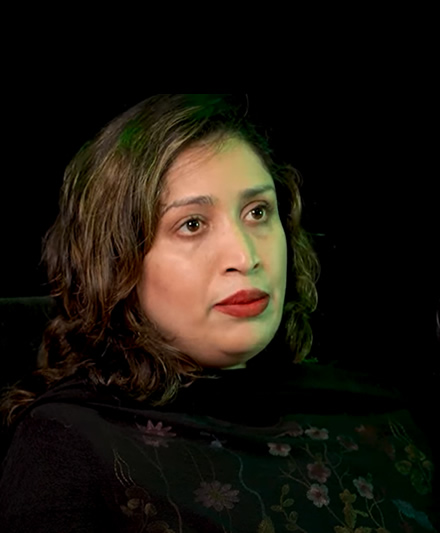Dr. Fouzia Farooq
Home » Dr. Fouzia Farooq
Dr.
Fouzia Farooq
On February 28, 2024, Dr. Fouzia Farooq, Assistant Professor in the History Department at Quaid-i-Azam University (QAU), delivered a captivating lecture to the AIMH Internship Batch 4. The lecture, titled "Architecture of Pakistan: The Medieval Heritage," provided a comprehensive overview of Pakistan's architectural evolution, focusing particularly on the medieval period. Dr. Fouzia, adeptly navigated through Pakistan's historical timeline, delineating the distinct periods: Ancient (pre-7th century), Medieval (7th to 18th century), and Modern (18th century onwards).

Architecture of Pakistan: The Medieval Heritage
The lecture delved into the pre-modern architectural marvels of Pakistan, each a testament to the rich historical and cultural tapestry of the region. She elucidated various architectural styles and structures that emerged over millennia, ranging from the Neolithic marvel of Mehr Garh to the grandeur of the Indus Valley Civilization, the Gandharan civilization, and landmarks like Takht-i-Bahi, Katas Raj, and Nalanda Fort (Salt Range).
A significant portion of the lecture was dedicated to unraveling the intricacies of medieval architecture in Pakistan. Dr. Fouzia meticulously delineated the diverse types of medieval cities that dotted the landscape, including walled cities, Shikargah, mandi-towns, trade & manufacturing towns, necropolis, and temporary cantonments or fort cities. She further elucidated on the various types of medieval constructions prevalent in the region, ranging from forts, mosques, palaces, tombs, shrines, and mousuleums to gardens, sarai, baoli-stepwells, baradaris or summer pavilions, baths, minarets, chauburji, necropolis, and old city gates and walls.
Moreover, Dr. Fouzia provided valuable insights into the materials used in medieval constructions, highlighting the significance of stone, brick, lime plaster, inlay work, and marble in shaping architectural masterpieces. The lecture also delved into the symbolism embedded within architectural elements such as the dome, inner roof, arch, minaret, lotus, and paradise garden, elucidating the deeper cultural and religious connotations associated with these features.
A highlight of the lecture was Dr. Fouzia's detailed exposition on the design elements and delicate ornamentation prevalent in medieval Pakistani buildings. Her vivid descriptions and insightful analysis offered attendees a profound understanding of the aesthetic and functional aspects of architectural marvels from the medieval era.
Request a Visit
The Army Institute of Military History
Preserve and promote the military history of Pakistan and the history of the Pakistan Army, while acting as centre of excellence for studying military history, and providing a forum for open-source intellectual input to the Pakistan Army, through two-way interaction with academia and civil society
Contact Information
- 252 Aziz Bhatti Road
Rawalpindi, 46000
Pakistan - admin@aimh.gov.pk
- (92) 51 - 520 2244 (ext142)

